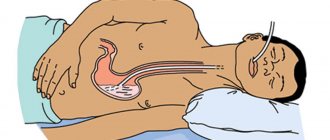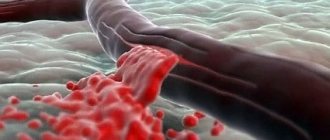Clinical Hospital No. 71 in Moscow – Surgery – Thrombectomy
Thrombectomy is a surgical procedure aimed at removing a blood clot from the blood vessels. The procedure occurs by cutting out the blood clot from the site of formation. In carrying out such an operation, 2 techniques are used: traditional and endovascular. Surgeons make an incision in the vessel at the site of the lesion and remove the blood clot with a special tool. As a result, normal blood circulation in the vessels is restored, and the general condition of the patient improves.
Thrombectomy techniques
To perform thrombectomy, professional equipment is used, as well as specialists who have undergone special training in this profile. Currently, the following thrombectomy techniques are used in practice:
- traditional,
- endovascular.
The decision to choose one or another method of surgical intervention is made by the doctor. This decision depends on the following factors:
- places where blood clots are located,
- causes of blood clots,
- on the condition of the blood vessels,
- age-related changes in the body.
Dangers of thrombophlebitis:
- fragments of the resulting thrombus can suddenly break off and, rushing upward through the bloodstream, reach and block the pulmonary artery, which leads to pulmonary embolism (PE) and instant death.
- When moving to the deep veins, the thrombus causes swelling and the subsequent rapid development of a trophic ulcer; in severe stages, amputation of the limb is possible.
At-risk groups
The main group of patients are patients with varicose veins: varicose veins provoke thrombophlebitis: the rate of blood circulation decreases due to the expansion and deformation of the affected veins, congestion is caused, and, as a result, blood clots and blood clots are formed.
If you have varicose veins, you must be regularly examined by a phlebologist, this is a matter of life. If varicose veins have been observed in your close relatives, it is advisable to check the health of the veins with a phlebologist.
Causes of thrombophlebitis of the great saphenous vein
- phlebeurysm;
- cardiovascular diseases;
- oncological diseases;
- inflammatory processes in the body of various types;
- injury to blood vessels in the legs;
- taking hormonal medications, including contraception;
- obesity and sedentary lifestyle;
- heavy loads, including when playing sports;
- pregnancy and postpartum period;
- forced immobility (eg, postoperative period);
- increased blood clotting caused by hereditary or acquired causes;
- air travel (long immobilization with frequent pressure changes);
- high temperature due to viral diseases.
Symptoms of thrombophlebitis of the lower extremities
Initially, painful sensations appear along the affected vein. The area of skin where the vessel lies becomes hot to the touch, acquires a bright red, scarlet tint, and the redness spreads widely in the form of swelling. The temperature rises first at the site of thrombophlebitis, then throughout the body and reaches from 37 to 38 C.
How is thrombophlebitis diagnosed?
When visiting a phlebologist, the primary diagnosis is duplex ultrasound. The width of the lumen of the venous wall, blood circulation, localization, extent and number of formed thrombotic clots are assessed;
A coagulogram is performed, general and biochemical blood tests are taken;
If pulmonary embolism is suspected, the patient is given a CT scan of the lungs or a chest x-ray.
How is thrombophlebitis of the great saphenous vein (GSV) treated?
If you notice symptoms of the disease, you should immediately rush to see a doctor: the treatment of this pathology is the responsibility of vascular surgeons-phlebologists. After identifying the localization of thrombophlebitis, treatment tactics may be different. With safe localization, outpatient treatment at home is acceptable; with progressive thrombophlebitis, which is ascending in nature and localized in dangerous areas of the leg, prompt hospitalization is required; surgery is performed to free the vein from the blood clot. Thus, treatment is divided into conservative and surgical.
With conservative treatment:
long-term wearing of compression garments and a large list of medications are prescribed, depending on the nature of the process and aimed at reducing inflammatory processes and localizing the blood clot with subsequent liquefaction. The following groups of drugs are used:
- anticoagulant;
- non-steroidal anti-inflammatory;
- phlebotonic;
- heparin;
- antibacterial.
During surgical treatment:
The most modern methods of completely getting rid of thrombophlebitis are used. These include various surgical options that completely remove blood clots, and can range from minimally invasive to major surgeries, such as:
- A crossectomy is performed: the great saphenous vein and its tributaries are cut off, thus stopping further growth of the thrombus. This method is used for acute thrombophlebitis with ascending thrombosis. As soon as it is diagnosed, the procedure is prepared and carried out urgently, within 2 days from the date of treatment.
- a permanent or temporary vena cava filter is implanted: a metal device shaped like a tulip is built into the lumen of the vein in a minimally invasive way. The purpose of this manipulation is to prevent further movement of blood clots into the pulmonary arteries. This filter is a blood clot trap without interfering with blood circulation.
We especially note that thrombophlebitis is an insidious pathology that tends to develop suddenly, with catastrophic consequences for the patient. Be sure to take measures to visit a phlebologist! This will save your life. In our Phlebology Clinic at the Russian Scientific Center for Surgery named after. Petrovsky, medical care to all Russian citizens, regardless of place of residence, is provided free of charge upon presentation of a compulsory medical insurance policy. You receive advice from the best phlebologists in one of the leading scientific medical institutions in the country. If there is an indication for surgery, it will also be performed free of charge (free of charge) according to a quota as high-tech medical care.
We care about your health!
Rehabilitation after surgery
After thrombectomy, the patient will be able to return to a full life only after a couple of days. Next, drug treatment is carried out. The attending physician prescribes the following medications to the patient:
- blood thinner tablets,
- drugs that restore veins, blood vessels,
- ointments that prevent the formation of clots,
- vitamin and mineral complexes.
To avoid the development of complications after surgery, you should follow the advice of your doctor:
- maintain an active lifestyle,
- wear elastic clothes,
- maintain proper nutrition,
- carry out physiotherapeutic procedures,
- Avoid visiting bathhouses and saunas for a while.
Indications and contraindications for the treatment method
Due to blockage of the arteries that supply the brain with oxygen, an ischemic stroke develops. Glucose deficiency occurs in the brain tissue and hypoxia occurs. Intravascular thrombectomy should be performed as soon as possible after indications for it have been established. In patients with ischemic stroke caused by occlusion of a large artery in the brain, the procedure is performed within 6 hours of the onset of symptoms. The safety and effectiveness of thrombectomy beyond these 6 hours is still being studied. The decision to perform intravascular intervention for ischemic stroke is made after a diagnostic examination.
Advantages and disadvantages of thrombectomy
The main disadvantage of thrombectomy is the development of complications after surgery. Among which are the following:
- infection of the surgical wound,
- reappearance of blood clots,
- bleeding.
Advantages of thrombectomy:
- the procedure takes approximately 15 minutes,
- proper blood supply to blood vessels is restored,
- pain disappears,
- low morbidity,
- fast recovery period.
Thrombectomy is just a quick way to eliminate pain and restore normal blood circulation in the vessels. Thrombectomy does not relieve the patient of the disease itself.
You can get detailed information about thrombectomy by calling +7 (495) 443-66-71 or write to us by e-mail
Briefly about the treatment method
For ischemic stroke, the most effective and reliable method of removing blood clots from the arteries of the brain is thrombectomy. There are several options for the procedure: - Aspiration thrombectomy. During the operation, a micro-incision is made through which a special catheter is inserted. Through it, saline solution flows under pressure into the affected vessel. Under the influence of the solution and salt, the thrombus softens, is divided into pieces and aspirated (suctioned out) using a syringe. Thanks to this method, the number of injuries to the internal walls of blood vessels is reduced. — Percutaneous mechanical thrombectomy. A catheter with a stent is inserted through a large artery. With the help of a stent, the clot is captured and removed through an incision in the vessel. This method is most often used in the treatment of stroke caused by blockage of blood vessels in the brain.
Advantages of treating thrombophlebitis at the Swiss University Hospital
- In our Center for Cardiovascular Surgery, treatment of varicothrombophlebitis is carried out not only by conservative methods. We have widely introduced our own minimally invasive surgical interventions into clinical practice, thanks to which we were able to reduce not only the trauma of surgical intervention, but also save the patient from complications, varicose veins of the saphenous veins, which leads to rapid healing and a reduction in the duration of the rehabilitation period, improving the quality of life.
- We were one of the first in the country to use minimally invasive techniques as part of combined phlebectomy in the treatment of patients with varicothrombophlebitis.
- To prevent venous thromboembolic complications, our clinic widely uses complex methods of preoperative, intraoperative, postoperative prevention of venous thromboembolic complications in accordance with the degree of risk of their occurrence.
- Vascular surgeons (phlebologists) at our clinic have many years of experience in performing surgical interventions, each of our specialists is fluent in all the techniques used in our clinic. Each surgeon has performed more than 2,500 successful operations for varicose veins, including those complicated by varicothrombophlebitis and deep vein thrombosis, with analysis of long-term results.
- Ultrasound diagnosis of thrombosis of the main veins of the lower extremities, its nature and the exclusion of local contraindications before surgery is carried out by vascular surgeons (phlebologists) using expert-class equipment at the highest professional level. Doctors of the Center for Vascular Surgery are certified specialists of the highest qualification category with an academic degree.
- We have developed and put into practice a protocol for ultrasound duplex scanning of the veins of the lower extremities, which allows not only to map in detail varicose veins and their sizes, but also to accurately determine the variants of pathological reflux with the location of sources of reflux, routes of spread of reflux, channels of blood return to the deep vein system, variant of thrombotic lesions of various venous segments of the limb. This protocol allows you to adequately select the method and scope of minimally invasive surgical intervention. Thus, in our practice, the number of tactical errors associated with the choice of method and volume of surgical intervention for venous thrombosis has significantly decreased, which has a qualitative impact on the results.
- The Vascular Surgery Center is equipped with expert-class equipment from world-famous manufacturers (such as Karl Storz, Covidien, ACUSON-Siemens, Valleylab, etc.). Cooperation with leaders in equipment production makes it possible to be several years ahead of other clinics and be one of the first to apply innovative technologies, scientific and medical developments in practice. To perform combined phlebectomy for varicose veins, complicated by varicothrombophlebitis and deep vein thrombosis, we use, in addition to proprietary, low-traumatic surgical instruments, certified disposable surgical instruments.
- We provide treatment in accordance with international standards, the quality of the services provided is assessed by international organizations that regularly visit our clinic to verify compliance with international standards.
- For each patient, we select a set of surgical intervention techniques, based on the individual characteristics of the course and severity of varicose veins, the presence and severity of concomitant pathology, physical and social activity, attitude towards one’s disease, and motivation for a good long-term result.
- We strictly and unswervingly adhere to the principles of continuity of treatment and family medicine, the principle of “open doors”, when the patient has the right to contact the operating surgeon if necessary at any time.
- In addition to vascular surgeons (phlebologists), patients in our clinic, if necessary, can count on the help of other specialists, which makes it possible to undergo a comprehensive examination and treatment.
- Considering the chronic nature of the course of chronic venous diseases, the tendency to relapse, and thrombotic complications, we have moved away from the impersonal “operate and forget” system to a lifelong monitoring system, including annual ultrasound examination.
- We will determine the frequency of further follow-up examinations and examinations for timely detection and minimally invasive outpatient elimination of recurrent varicose veins and correction of conservative treatment.
- When determining whether a patient is suitable for surgical intervention for venous thrombosis, we do not follow his wishes, observing, first of all, the principle of “do no harm.”
- Together with you, we will try not only to save you from severe manifestations of chronic venous diseases and possible relapse of varicose veins, but also to significantly improve the quality of your life in the future.
Conservative treatment
Conservative treatment is carried out in all cases, regardless of the type of thrombophlebitis, in some cases, if radical phlebectomy is not performed. The main components of conservative treatment are: active motor regimen, elastic compression, anti-inflammatory drugs, phlebotonics, anticoagulants according to indications (transition of thrombosis to the deep venous system or simultaneous deep vein thrombosis), local treatment with heparin-based gels. Treatment of varicothrombophlebitis can take from several weeks to 2-3 months.
Rules of behavior in the postoperative period
If the evacuation of hemorrhoidal blood clots was carried out against the background of the patient’s satisfactory condition, then the postoperative period does not provide for significant restrictions.
The following are prohibited: ___• physical activity, ___• thermal procedures (bath, sauna, beach holiday), ___• prolonged stay in a sitting or squatting position.
Products that cause a rush of blood to the pelvic vessels or irritation of the mucous membrane are excluded from the diet: spicy, salty, smoked foods and alcohol.
Food should be rich in fiber, which stimulates intestinal function (prunes, apples). It is not recommended to eat foods that can cause constipation (rice and semolina porridge, potatoes, pasta). If stool retention occurs, a mild laxative (for example, Forlax) is prescribed.
After each bowel movement, wash the anal area with warm water and change the sterile napkin. If suspicious symptoms appear (pain, bleeding, discharge from the wound), you should immediately consult a doctor.
Diagnostics
Diagnosis of hemorrhoidal thrombosis is not difficult. The diagnosis is made by external examination of the anal area .
If the proctologist decides on surgical intervention, it will be necessary to take tests : ___• general blood test, ___• coagulogram, ___• blood glucose level.
It is necessary to tell the attending surgeon about all medications taken, since some medications (oral contraceptives, non-steroidal anti-inflammatory drugs, etc.) affect blood clotting.
How the treatment method works
Removal of blood clots in modern clinics is controlled by CT angiography. With its help, you can very accurately determine the location of the blood clot and plan the course of the operation. Recently, percutaneous mechanical thrombectomy is more often used to remove blood clots from the arteries of the brain. A guide catheter is inserted into the femoral artery in the groin and then guided (visually controlled using a CT scan) to the site of the blockage. The catheter carries a special stent, which is folded. Passing through the thrombus, the stent straightens and captures it. The thrombus captured by the stent is removed through a micro-incision in the artery. If thrombectomy is not possible for any reason (for example, if the thrombus is located in an arterial branch), thrombolysis is performed. This method allows you to restore blood supply to brain tissue faster than with anticoagulant therapy.










